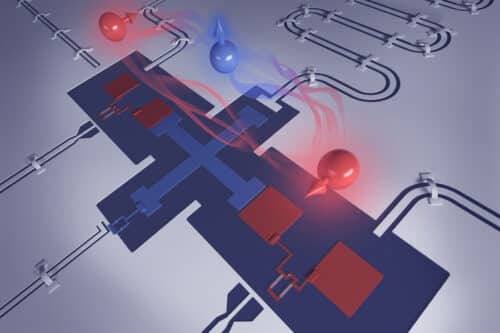- The advance brings quantum error correction a step closer to reality.
- Two-qubit gates have an accuracy exceeding 99.9 per cent, and single-qubit gates have a 99.99 per cent accuracy.

MIT researchers have advanced in quantum computing, a technology that promises to revolutionize problem-solving capabilities. Quantum computers, with their potential to tackle immensely complex problems, have long been hailed as the future of computing. To harness their true power, they must operate with minimal errors, a challenge that has eluded scientists until now. The current quantum computers are not yet robust enough to implement error correction at commercially relevant scales.
Quantum Computing with Fluxonium Qubits
The researchers have unveiled a superconducting qubit architecture, leveraging a relatively new superconducting qubit called the “fluxonium.” These fluxonium qubits have longer lifespans than the more commonly used transmon qubits, which is crucial for maintaining the fidelity of quantum operations. This architecture features a special coupling element between two fluxonium qubits, enabling them to execute logical operations or gates precisely. This innovation suppresses unwanted background interactions, which can introduce errors into quantum operations. This research is the implementation of architecture on a chip using a scalable fabrication process, promising practical applicability in the real world.
Similar to logical operations in classical computing, gates are pivotal for computation in quantum computing. High-fidelity gates are essential because quantum errors accumulate exponentially, posing a significant challenge in large-scale quantum systems. Error-correcting codes can address this issue but require quantum operations to surpass a fidelity threshold. For years, transmon qubits were the primary choice for quantum computing research. Fluxonium qubits, however, emerged as a promising alternative with longer coherence times, measuring how long a qubit can perform operations before data loss occurs.
Architecture Sets the Stage for Practical Quantum Computing
The team’s architecture incorporates two fluxonium qubits with a tunable transmon coupler, known as the fluxonium-transmon-fluxonium (FTF) architecture. This design strengthens qubit coupling while minimizing unwanted background noise during quantum operations, which is impossible with direct connections between fluxonium qubits. The results are poised to drive the development of practical quantum computing solutions. A quantum computing startup, Atlantic Quantum, has already emerged from this research, aiming to leverage fluxonium qubits for commercial and industrial applications. While a fully functional quantum computer is likely a decade away, this research paves the way for a new era in computing technology.
The team’s next challenge is to showcase the advantages of the FTF architecture in systems with more than two connected qubits, marking a significant step toward the realization of a fault-tolerant quantum computer. This work was funded, in part, by the U.S. Army Research Office, the U.S. Undersecretary of Defense for Research and Engineering, an IBM PhD fellowship, the Korea Foundation for Advance Studies, and the U.S. National Defense Science and Engineering Graduate Fellowship Program.






